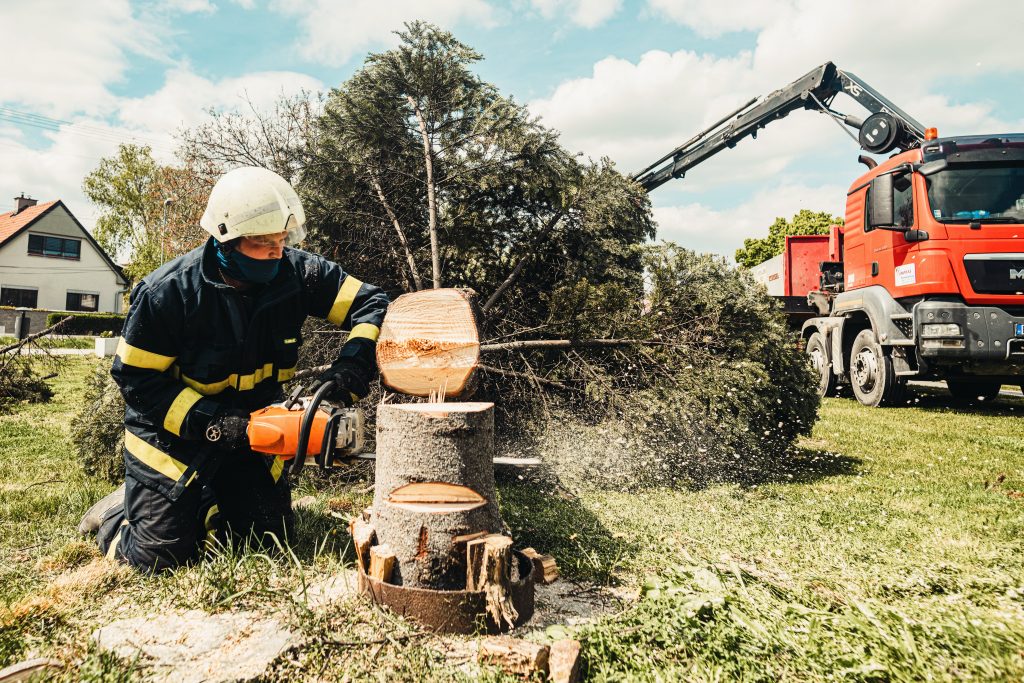Dealing with the Aftermath: What Happens If a Tree Service Damages a Neighbor’s House?

Trees are an integral part of our environment, providing numerous benefits such as shade, oxygen, and aesthetic appeal. However, when it comes to tree maintenance and removal, there can be instances where mistakes happen. One such unfortunate situation is when a tree service accidentally damages a neighbor’s house. This article will explore the implications, legal aspects, insurance considerations, and steps to take when faced with such a scenario. By understanding the process and taking appropriate action, both the tree owner and the affected neighbor can work towards a fair resolution.
The Importance of Planning and Permission:
Before delving into the repercussions of a tree service damaging a neighbor’s house, it is essential to emphasize the significance of proper planning and permission. Tree owners should consult local planning authorities and follow the guidelines for any tree removal or maintenance activities. Obtaining formal planning permission and adhering to relevant regulations can help prevent many issues that might arise later on.
The Damages and the Neighbor’s Complaint:
In the unfortunate event that a neighbor’s house is damaged by a tree service, the affected neighbor has the right to file a complaint. The first step for the neighbor is to document the damages thoroughly. This includes taking photographs, gathering any relevant evidence, and collecting witness statements if available. It is advisable for the neighbor to communicate the complaint in writing through a formal complaint letter, highlighting the specifics of the incident and the resulting damages.
Seeking Resolution:
Upon receiving the complaint, the tree owner should respond promptly and take responsibility for the damages caused. Open communication is vital to reach a resolution, and the tree owner may choose to involve their insurance company at this stage. It is crucial to approach the situation with empathy, understanding the impact the incident may have had on the neighbor’s property and daily life.
Involvement of Insurance Companies:
The insurance company of the tree owner plays a significant role in assessing the damages and handling the compensation process. The affected neighbor should also contact their own homeowners’ insurance company to report the incident and seek advice. If the damages are covered under the tree owner’s insurance policy, the neighbor’s insurer may seek reimbursement through subrogation.
Legal Implications and Liability:
In situations where insurance coverage does not fully address the damages, legal recourse may be necessary. The affected neighbor has the right to pursue a legal claim against the tree owner for compensation. It is advisable for both parties to consult lawyers who specialize in property and insurance law to navigate the legal complexities and protect their respective interests.
The Role of Arborists and Expert Opinions:
Arborists, as tree specialists, can play a crucial role in assessing the damages, identifying the cause, and providing expert opinions. Their expertise can help determine whether the damages were a result of negligence or unforeseen circumstances. Their professional evaluation can contribute valuable insights during the resolution process and potentially support insurance claims or legal proceedings.
Insurance Considerations:
Homeowners’ insurance policies may cover damages caused by trees, but it is important to review the specific policy details and consult with the insurance agent to determine the coverage and applicable deductibles. Insurance premiums may be affected in the future if a claim is made. Additionally, tree owners should consider liability risks associated with trees on their property and explore the possibility of obtaining additional coverage to mitigate such risks.
Mediation, Arbitration, and Appeals:
If a resolution cannot be reached through direct negotiations, alternative dispute resolution methods such as mediation or arbitration can be pursued. These processes involve neutral third parties who assist in facilitating a fair agreement between the parties involved. In the event of disagreements regarding legal decisions or compensation, the affected neighbor may have the option to file an appeal within the appropriate legal framework.
Conclusion:
In summary, when a tree service damages a neighbor’s house, it is crucial to address the issue promptly, communicate openly, and explore possible resolutions. Proper planning and obtaining permission before engaging in tree maintenance activities can prevent such incidents. Insurance companies, arborists, and legal professionals can provide guidance throughout the process, ensuring fair compensation and mitigating liability risks. By following the appropriate steps and seeking professional advice, both the tree owner and the affected neighbor can work towards a satisfactory resolution.
Comments
Post a Comment